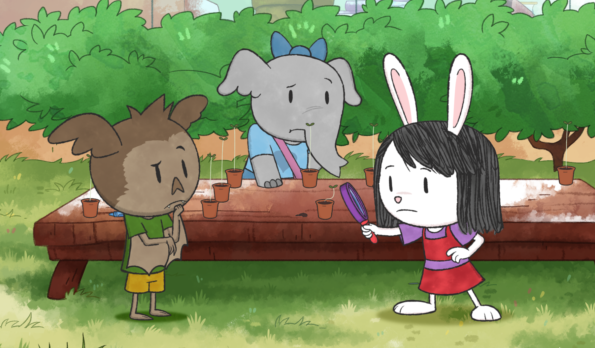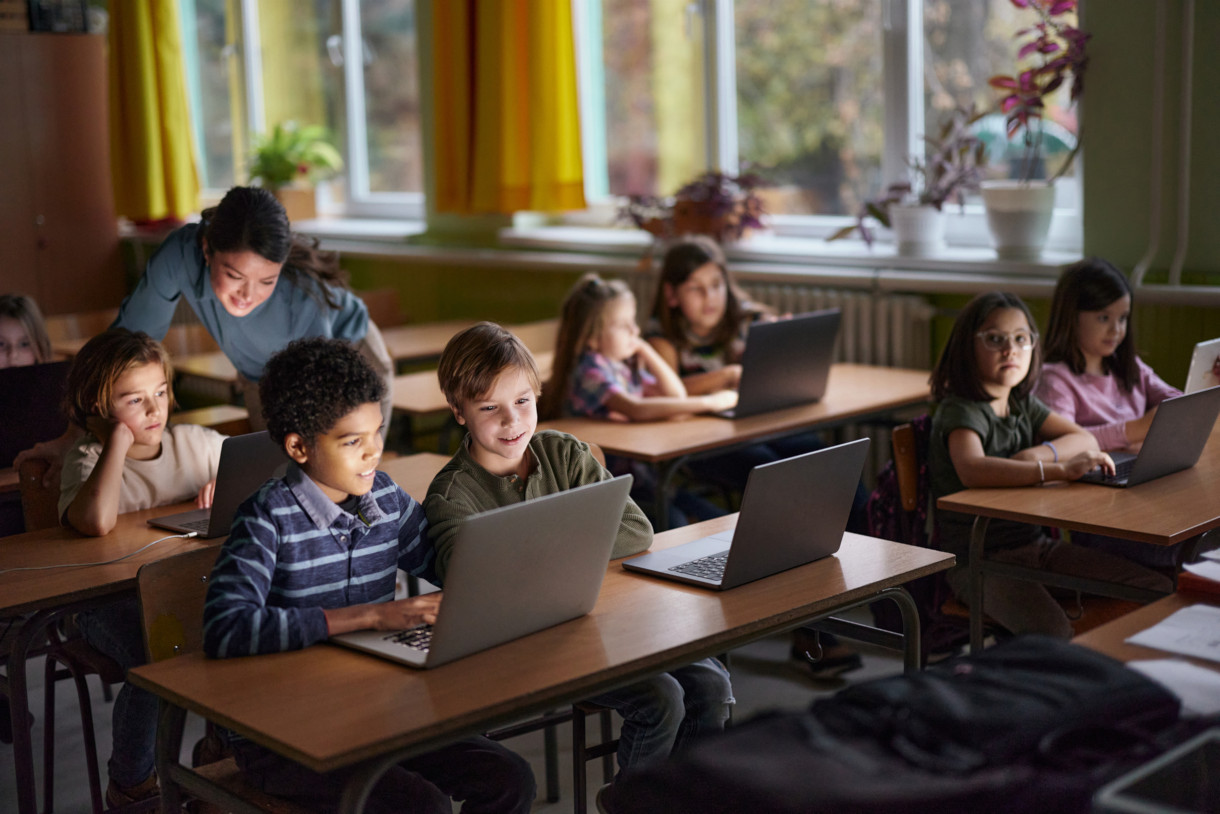AI-Assisted Characters Help Students Learn From TV, According to Harvard-Led Research
Young students learned best when they not only watched the PBS Kids show "Elinor Wonders Why" but also interacted with an AI version of Elinor.

A team led by a Harvard scientist found that young students learn more from educational TV shows when they have a chance to interact with AI-powered versions of the characters from the show.
“Children spend a lot of time watching television, and high-quality educational programming is an important source of learning,” says Ying Xu, a professor at the Harvard Graduate School of Education and the lead author of the study describing this research. “We also know that they learn better when an engaging adult is sitting next to them, asking questions and talking with them.”
The problem is caregiver availability doesn’t always align with children’s screen time, causing a potential missed learning opportunity. Thinking about this, Xu wondered if AI chatbot technology could assist in learning when a caregiver isn't watching a show with them.
“What if we could integrate these technologies into children’s television shows, allowing them to interact with characters and learn in an engaging way?” Xu asks.
How Was This Study Conducted?
To test her theory, Xu and her colleagues partnered with PBS Kids to conduct a study with more than 200 children aged 4-7. The students were split into three groups of 80 students. All students were shown the PBS KIDS science show, Elinor Wonders Why, which is geared toward children in preschool and early elementary school.
The show was paired with different levels of interaction. One group just watched the show. Another group watched the show but also interacted with an AI-assisted version of Elinor, who is a curious cartoon rabbit, which encouraged children to answer questions and offered tips if they got it wrong. The final group of students watched the show complete with a section in which Elinor asked the viewers questions and gave a generic reply after a pause. “This is a popular approach that many TV shows use to create a sense of interactivity,” Xu says.
The students were then asked a series of questions to assess what they had learned.
Tools and ideas to transform education. Sign up below.
What Did This Study Find?
“We found that children who watched the interactive version performed the best, answering the most questions correctly, followed by those who watched the pseudo-interactive version, and lastly, the children who watched the broadcast version,” Xu says. “Our findings suggest a potential scalable mechanism to support children’s learning from television. We also confirmed that engaging in conversations with children helps enhance their learning from television, even when these interactions are with characters rather than a human partner.”
However, there were limitations. Though statistically significant, the difference between the three groups was smaller than expected, Xu says. “Given that this was a very short study, we might anticipate larger effects when children watch multiple videos over a longer period of time,” she says. “This is exactly the kind of study we plan to carry out in a couple of months.”
What's Next For This Type of Research?
Beyond studying how the impact of interactive AI characters influences young students over time, Xu is working on taking this concept into more natural learning environments.
“We are conducting research to understand how children might interact with and learn from these interactive videos in their homes, rather than in the lab, as this is a more natural setting where most of their media consumption occurs,” Xu says. “We are also exploring whether the benefits could extend to other STEM domains, such as computational thinking.”
Furthermore, Xu wants to learn more about the real-world applications of AI-assisted lessons. “We are particularly interested in examining how interacting with AI might help children not only comprehend the educational content but also enhance their ability to apply what they learn to solve real-world problems,” Xu says.
Erik Ofgang is a Tech & Learning contributor. A journalist, author and educator, his work has appeared in The New York Times, the Washington Post, the Smithsonian, The Atlantic, and Associated Press. He currently teaches at Western Connecticut State University’s MFA program. While a staff writer at Connecticut Magazine he won a Society of Professional Journalism Award for his education reporting. He is interested in how humans learn and how technology can make that more effective.

